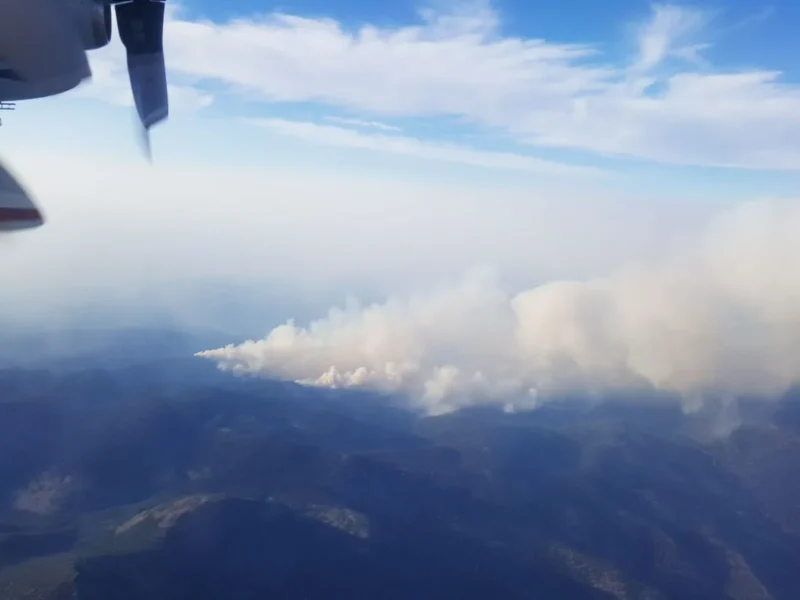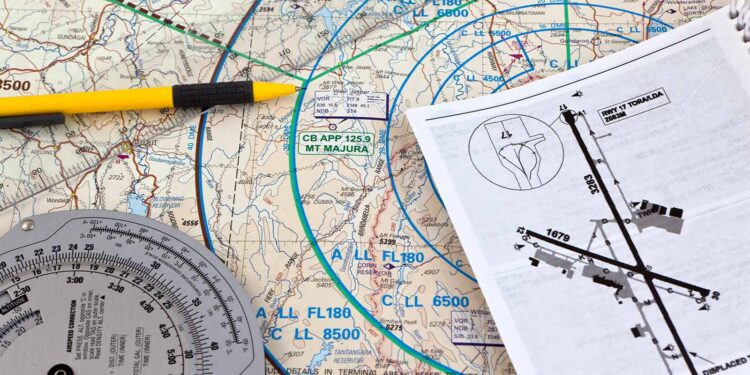I had a reader send in a question about joining the circuit at Bromont airport a little while ago. I’ll let him explain it:
On my first solo flight after getting my Licence, I decided to go from Montreal CYHU to Bromont CZBM.
The MF was closed so it was now an ATF. There were 2 planes in the circuit and they gave me the info that RWY 05L was the active. One was on Final and the other one on initial climb. I decided to Join mid-downwind directly from the active side [at a 45° angle]. There was soaring activity on the upwind side.
On downwind, the guy that was on final told me that I couldn’t just join the downwind like that. I was surprised and apologized. Back to YHU I talked with an instructor who told me I have to fly over the aerodrome at 500′ above circuit altitude, descend on the upwind and come back to join mid-downwind. But I can’t do that at CZBM since there is always activities on the Upwind side.
The soaring activity was using the grass strip (runway 05R) on the upwind side of runway 05L. Take a look at the airport diagram. The only relevant procedures for this airport in the CFS is that runway 05R/23R to use right hand circuits. It also states “Do not over fly airport during glider ops”
So, was the pilot correct in joining the circuit this way? If you feel his actions were incorrect, then how do you think he should have joined?
I will post the correct answer in a few days. (oh and my post about Runway Surface Condition reports is coming!)


Based on my read of the latest edition of the AIM (4.5.2.a.vii) is that when arriving at an uncontrolled aerodrome within an MF area when airport advisory information is not available, aircraft should approach the circuit either:
– from the upwind side (i.e. cross over at mid-field to join (for the runway cited in this case)a mid-left downwind, or cross over at mid-field, perform the turnaround procedure as advised by the instructor back at YHU, and then join on the mid-left downwind; or
– once it has been ascertained that there is no conflict, via a straight-in downwind arrival. I don’t see any provision for joining via a 45 degree angle to the downwind, as was done by our newly-licensed pilot who has posed the question.
By the way, on a different note: I’m not sure than an aerodrome with an MF reverts to being an ATF aerodrome when advisory information is not available – at least, I can’t find that stipulated in the AIM. Am I missing something?
I find it very confusing and can’t find anything in writing that supports my theory on when a MF becomes an ATF.
If you look at the CFS entry for Bromont, under the COMM section you will see the following:
MF/ATF UNICOM (AU) 12-02Z O/T tfc 122.15 5NM 3400 ASL (CAR 602.98)
So does that mean it becomes an ATF if/when the UNICOM is closed?
Also, in the latest version of the CFS, the PRO section has been updated. Which states:
“Do not over fly airport during glider ops”
One thing my instructor taught me was that safety always overrides procedur- it’s stupid to rigidly follow “procedure” when it’s possible injury or death will result.
Either the instructor in question was unaware of the soaring activity, or was one of those types who will “follow the rules” to the detriment of not only others, but potentially himself.
That said, I was taught to do the overhead join when possible, or if not possible, a straight in arrival. I don’t think that the 45 degree join is officially supported in Canada (whereas if I remember correctly it’s acceptable and even common in the USA), but again, when safety trumps procedure, I don’t think that taking that option in the interest of safety at that point in time is worthy of a smack-down from an (apparently rather unaware of the situation) instructor.
Mark, I agree. Safety always trumps procedure. If you get caught violating a CAR or other rule because it would put you or someone else in danger, Transport Canada would not have an issue with that.
The 45° join is supported in Canada when the an airport advisory is available. Take a look at RAC 4.5.2 2(a)(vi):
Aerodromes within an MF area when airport advisory information is available: Aircraft may join the circuit pattern straight-in or at 45° to the downwind leg or straight-in to the base or final legs (Figure 4.1). Pilots should be alert for other VFR traffic entering the circuit at these positions and for IFR straight-in or circling approaches.
Markham airport (CNU8) is like that as well. When Gliders are in operations (usually they have a NOTAM), they use (blocked off) the north side of the field to 3500ASL. When powered aircraft joined, they are not allowed to enter the north side of the airport (except emergency).. i.e. We ALWAYS fly at the south side of the field.
So what we did is, if we are landing on RWY 09, we use the right hand circuit from the south side. So, if you are coming from the North (say Stoufville), we have to be 1500 AGL outside their glider zone (fly to near Clairemont), decend to circuit alt, and join the Right circuit at 1000 AGL.
For Runway 27, we have to do a ‘BIG S’ entry to the circuit. i.e. We fly south of the airport westbound at 1500 AGL, somewhere near the threshold of west end of the runway, we turn north (no time crossing the runway center line to the north!), decend to 1000 AGL, then turn East again to join left downwind for runway 27.
It is hectic at times because they have higher priority and you always have to keep an eye on them and be ready to overshoot.
Similar and just as important considerations hold at airports where parachute activity is taking place. A free fall jumper can be all but invisible, and moving so fast that evasive action is all but impossible, until the chute opens. In either case a quick call to the tow or jump plane can result in a wealth of valuable information.
Since the airport was not an MF, the a 45 degree
approach wouldn’t be legal.
In an ATF you can enter at circuit altitude from the
dead side, overhead for a mid downwind, or,
straight in downwind. In this case, I would have
planned to stay at least 3 NM from the airport and
positioned myself for the straight in downwind.
…Am I wrong?